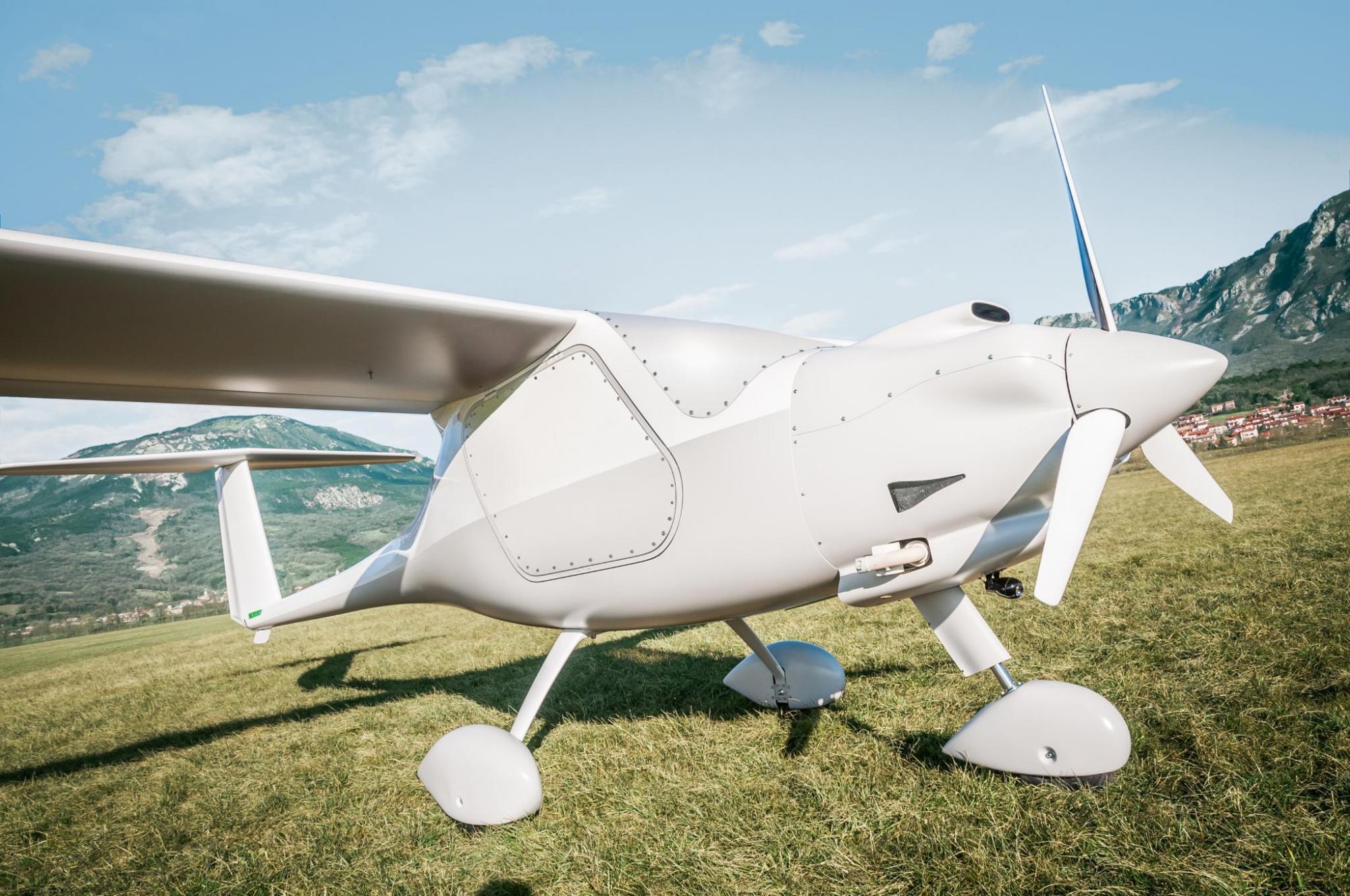
Textron is tapping into the market for low-cost intelligence surveillance and reconnaissance (ISR) aircraft through new subsidiary Pipistrel, the Slovenian general aviation pioneer.
Pipistrel’s Surveyor, an optionally piloted derivative of the company’s Virus SW121 ultralight aircraft, is set to make its Farnborough Airshow debut next week.
An ISR conversion of Pipistrel’s Sinus ultralight, developed by DZYNE Technologies, has been operated extensively by U.S. Special Operations Command (SOCOM).
Textron believes this Pipistrel experience could now broaden the ultralight platform’s appeal to military customers.
Capable of lofting an electro-optical payload to altitudes of 30,000 ft. and able to loiter for up to 30 hr., its performance benefits from Pipistrel’s glider design heritage, Textron eAviation President and CEO Rob Scholl says. Textron eAviation is the group’s recently established business segment that oversees the Pipistrel business and has absorbed other electric aviation projects within the Textron group, notably Bell’s Nexus electric vertical takeoff and landing (eVTOL) aircraft.
“[The Surveyor] is a unique platform,” Scholl says. “It is built off a glider design and the glider heritage of Pipistrel, so with that clean wing and Rotax engine you end up with a very efficient platform.”
“But it is difficult to compare to anything currently in the market ... and it has a lot of the capabilities in the on-demand space,” Scholl says.
Surveyor options include the ability to use a 35-ft.-long wing or a 50-ft. wing for increased endurance. The aircraft can even be adapted to become a taildragger rather than use tricycle landing gear as standard. The platform can carry as much as 300 kg (660 lb.) of cargo if required, including in specially built wing pods.
The Surveyor’s glider attributes also apply when deploying the aircraft, Scholl notes. The wings can be quickly detached and reattached and the aircraft itself can be operated from austere locations and “inconspicuously” hauled from location to location by truck if required.
“I think it provides customers with unique capabilities at a price point in this space that’s difficult to match and it works very well for customers,” Scholl says.
Aviation Week revealed in May 2020 that SOCOM was initially flying the ISR Pipistrel conversion as a proof-of-concept experiment. The Air Force Research Laboratory contracted DZYNE to adapt the Pipistrel airframe, installing sensors to collect full-motion video and signals intelligence.
Another derivative of Pipistrel’s Virus airframe is also making waves in the military aerospace community.
The company’s successful European Union Aviation Safety Agency (EASA) certification of the Velis Electro electric aircraft is prompting militaries in Europe to consider whether electric propulsion could be the answer to more environmentally sustainable flight training. Two European air forces have been experimenting with the platform, including the Royal Danish Air Force and the UK Royal Air Force.
BAE Systems has also been working with Pipistrel to explore the potential military training market with electric aircraft. That work has continued since Textron took ownership of Pipistrel in March.
Some air forces see the Velis Electro as potentially able to fulfill a basic trainer need, but others are looking for a platform with an aerobatic capability, for which the small Velis Electro does not quite fit the bill. But Scholl says Pipistrel’s next-generation platform will be able to serve the “full initial pilot curriculum.”
Batteries, which could make the platform economically viable, could become reliable and commercially available over the next 3-4 years, Scholl suggests.
“It’s an energy density question. It’s an economic question. It’s also the reliability of the manufacturing aspects of the cells themselves,” Scholl says. “[The batteries] are out there today—now we’ve got to do the engineering work to build the system around it.”
As well as the work on the Surveyor and Velis Electro, Scholl says Textron is committed to supporting Pipistrel’s work on its new products such as the Panthera four-seater light aircraft. That work includes a hybrid electric version of Panthera as well as the Nuuva V-300 eVTOL cargo aircraft currently under development. “Pipistrel has the capabilities to manage all of those [developments] themselves. What we want to do is accelerate that timeline for them,” Scholl says.
Although it has been certified by EASA, the U.S. FAA has not yet certified the Velis Electro. Scholl says the impact of the coronavirus pandemic slowed progress, but Textron would now support those efforts.
“The bilateral [relationship between FAA and EASA] is not working as efficiently as we would all like to see it work, and there are some unclear alignments on the light sport end of the market between what EASA and the FAA [are] doing,” Scholl says.
But FAA is working through these issues through its Mosaic program for light sport aircraft, says Scholl, who is hopeful that the regulatory effort will include rules on alternative propulsion.

